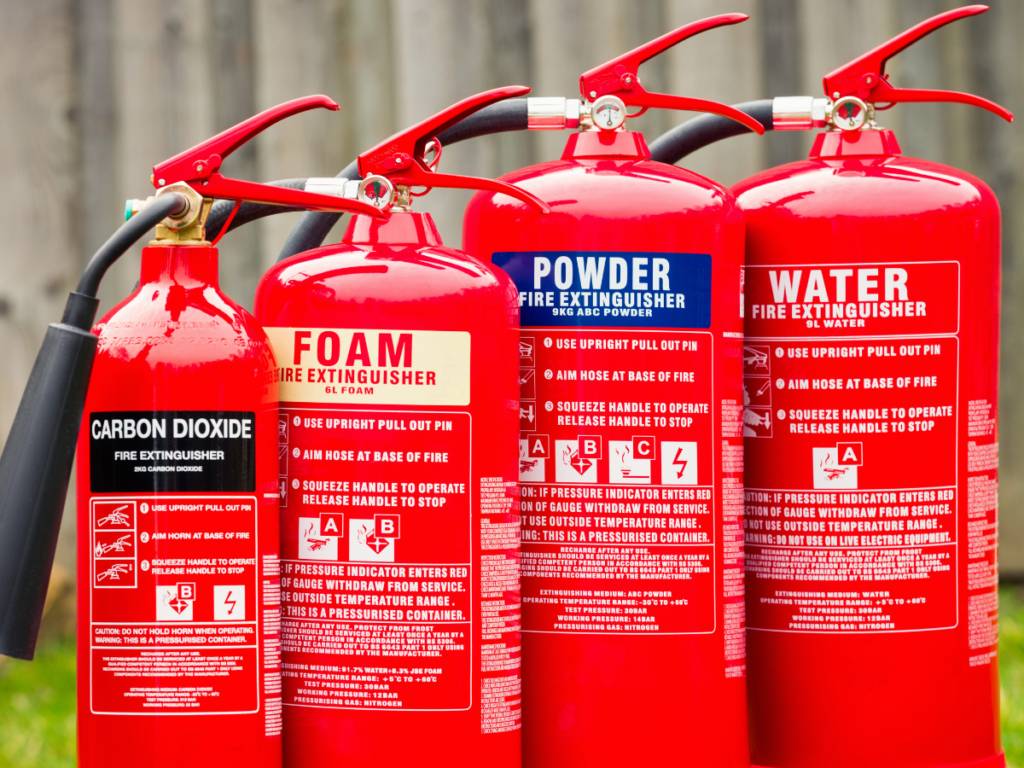How to Use a Fire Extinguisher: The PASS Method

Estimated reading time: 4 minutes
Introduction
When it comes to fire safety, the general recommendation is to escape from a fire, rather than try to tackle it. Instead, in most cases, you should leave the firefighting to fire service professionals. For those of us who have taken fire training, however, we may recognise the advantage of extinguishing a blaze before it gets out of control. To do so, one must know how to use a fire extinguisher.
There is a wide range of different classes of fire, each of which must be tackled with the most appropriate fire extinguisher and/or equipment. In this article, we’ll explore the PASS Method, learning step-by-step use of a fire extinguisher, as well as which type of extinguisher is most suitable for each type of fire.
What does PASS stand for?
Fire professionals realised long ago that, during an emergency, remembering a long list of instructions off the top of one’s head would only increase panic. To help, they created the ‘PASS’ acronym, which stands for the following 4 steps:
- Pull – pull the safety pin/tag out of the extinguisher, priming it for use.
- Aim – always aim at the base of the fire. To break the fire triangle, you need to aim at the source of the fire where the fuel is, not at the flames.
- Squeeze – squeeze the trigger slowly, holding steadily as the extinguisher expels its chemicals.
- Sweep – sweep the extinguisher back and forth over the base of the flames until the fire is out.
Which fire extinguisher should you use?
Using the correct extinguisher to combat a fire is key, as each class of fire has different properties and must be responded to differently. Accordingly, there should be a certain degree of advanced planning in your fire response. For example, in the workplace, a proper fire risk assessment is necessary to determine what variety of fire is most likely to break out.
We recommend reading our articles above, so that you can understand why each fire occurs and why you should tackle them in a certain way. Below, however, is a more brief summary of the types of fire and the extinguishers you might use to tackle them:
CLASS A – Solid Materials
CLASS B – Flammable Liquids
CLASS C – Flammable Gas
CLASS D – Flammable Metals
ELECTRICAL
CLASS F – Cooking Fats & Oils
| CLASS A – Solid Materials Wood, paper, fabric etc. | CLASS B – Flammable Liquids Petrol, paint stripper etc. | CLASS C – Flammable Gas Methane, Butane etc. | CLASS D – Flammable Metals Magnesium, Aluminium etc. | ELECTRICAL Printers, computers etc. | CLASS F – Cooking Fats & Oils Chip pans, deep-fat fryers etc. |
| Water | |||||
| Carbon dioxide | Carbon dioxide | ||||
| Foam | Foam | ||||
| Powder | Powder | Powder | Powder | Powder | |
| Wet chemical | Wet chemical |
Here are a few things to consider about the most common fire extinguishers:
Powder Fire Extinguishers
Upon reading this table, you might wonder why powder extinguishers aren’t stocked universally, as they seem to be a catch-all solution. Well, the powder used in these extinguishers is very fine and can cause visibility issues and breathing problems. Additionally, once a fire is extinguished with powder, the mess created is far harder to manage than water or CO2, which are far more common.
Water Fire Extinguishers
Note, some of the possible dangers posed by water-based extinguishers. With regards to use, water-based extinguishers will eject water forcefully, at high pressure, so there’s no need to stand directly over or near the fire, as you could get some splashback.
When combatting electrical fire, you should never use a water-based extinguisher, as water is a powerful conductor. Similarly, you should never use water-based extinguishers on hot oil/gas fires, as they could cause dispersion of the fire and explosions.

CO2 Fire Extinguishers
In high quantities, carbon dioxide can become dangerous. A sudden increase in CO2 in a confined space can cause fainting, disorientation and even death. When using a CO2 fire extinguisher, then, do so in an open space, from which people can readily escape. Note also that the cone from which the CO2 fires will become very cold and can cause injury.
Flight over fight?
Fire extinguishers need to be handled properly. Incorrect usage of an extinguisher could not only jeopardise your chances of handling a fire but, in fact, make it worse. Face-to-face fire extinguisher training can help prevent this, teaching you and your staff the proper practices.
Without doubt, the best option is not to use them and clear the building. Unless you have no choice, or it is totally safe to do so, firefighting is best left to the professionals. The best policy when facing a fire is ‘get out and stay out’.
